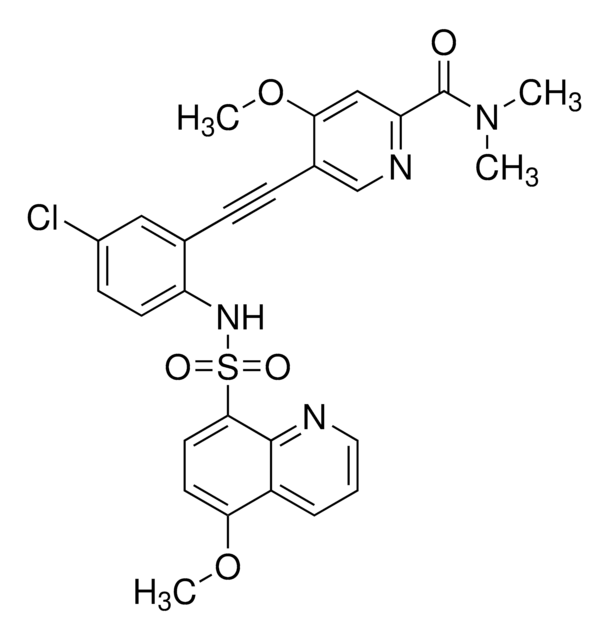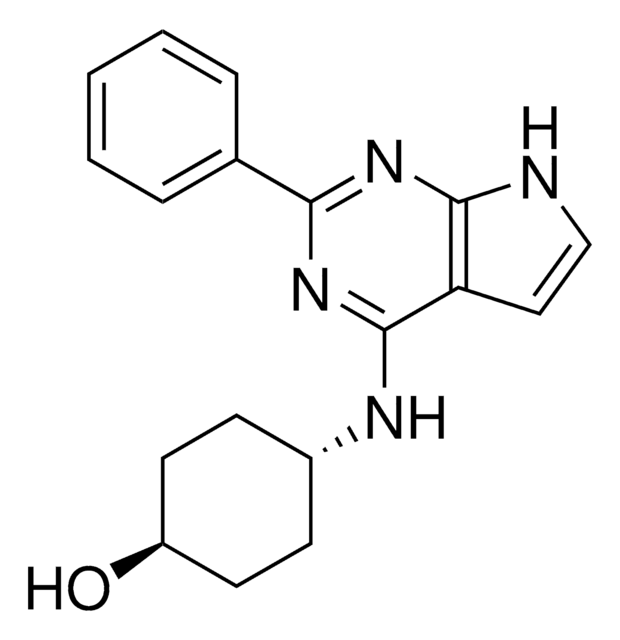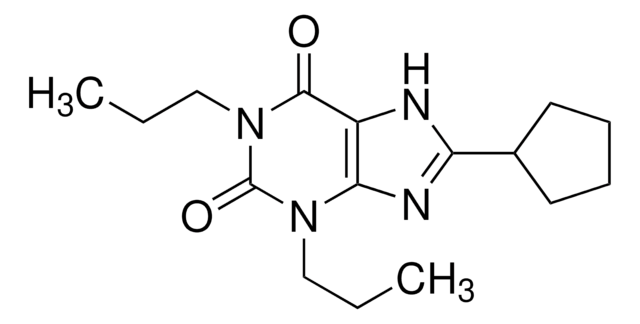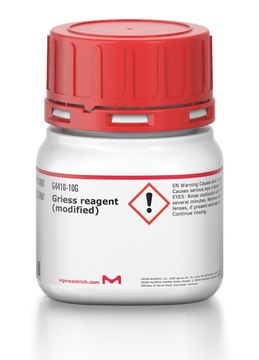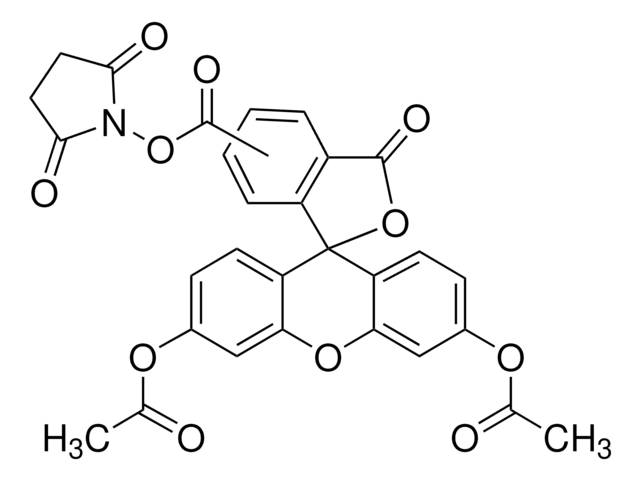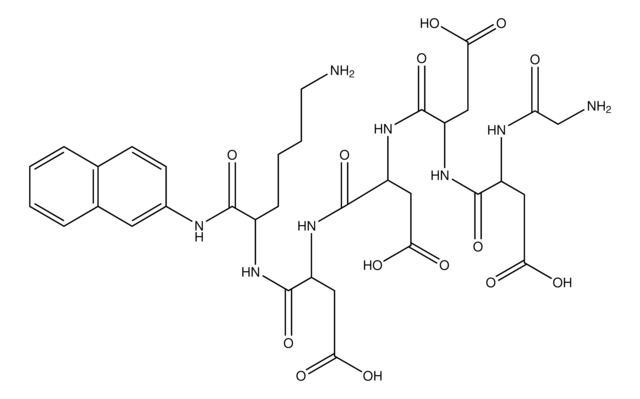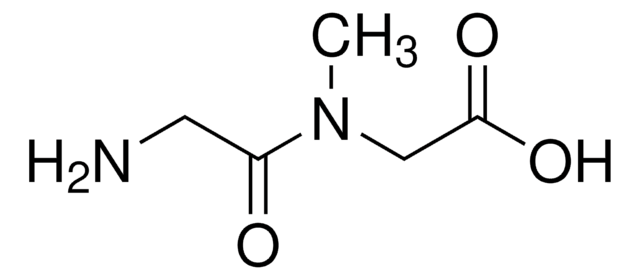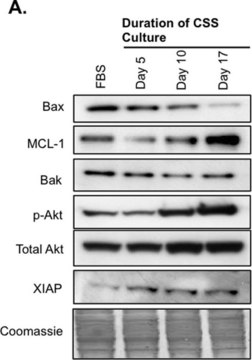SRP0676
Sortase A, S. aureus, His-tag
Staphylococcus aureus, recombinant, N-terminal His-Tag
Sign Into View Organizational & Contract Pricing
All Photos(1)
Synonym(s):
SrtA, sortase A
UNSPSC Code:
41202061
Recommended Products
recombinant
expressed in E. coli
tag
His tagged
form
liquid
mol wt
27.7 kDa
UniProt accession no.
storage temp.
−70°C
Related Categories
General description
Our comprehensive portfolio of upstream process chemicals not only provides biopharmaceutical manufacturers with high-quality raw materials for production of classical and novel therapies, but also helps them get to market faster and simplify regulatory challenges. Trust us to deliver supply chain transparency and reliable sourcing around the globe, streamlining your product qualification with best-in-class regulatory support and service.
Application
This product is suitable for in vitro ligation of proteins and peptides to other. Sortase A has been shown to create circularized proteins [1], as well as couple polypeptides to a wide range of substituents including polymers [2], lipids [3], fluorophores [4], sugars [5], microspheres [3], peptide nucleic acids [6], among others.
Biochem/physiol Actions
Staphylococcal Sortase A is a bacterial transpeptidase that covalently links proteins to the bacterial cell wall by cleaving between threonine and glycine at an LPXTG recognition motif and catalyzes the formation of an amide bond between the carboxyl-group of threonine and the amino-group of the cell-wall peptidoglycan [7]. This chemistry can be exploited to site-specifically link proteins/peptides with the C-terminal LPETGX motif to other proteins or molecules possessing a glycine or aminomethylene motif [8].
Physical form
Aqueous buffered solution containing: 40 mM Tris-HCl, pH 8.0, 110 mM NaCl, 2.2 mM KCl, 8 mM imidazole, 0.04% Tween-20, and 20% glycerol
Analysis Note
Analysis of this product can be performed in a reaction buffer (50 μl) containing 50 mM HEPES (pH=7.4), 150 mM NaCl, 5 mM CaCl2, 5 mM (Gly)3, 25 mM Abz/Dnp substrate, and Sortase A for 30 min at 30°C. Fluorescence intensity is measured at Ex320nm/Em420nm.
WGK
WGK 2
Flash Point(F)
Not applicable
Flash Point(C)
Not applicable
Regulatory Information
常规特殊物品
Certificates of Analysis (COA)
Search for Certificates of Analysis (COA) by entering the products Lot/Batch Number. Lot and Batch Numbers can be found on a product’s label following the words ‘Lot’ or ‘Batch’.
Already Own This Product?
Find documentation for the products that you have recently purchased in the Document Library.
Hongyuan Mao et al.
Journal of the American Chemical Society, 126(9), 2670-2671 (2004-03-05)
Sortase (SrtA), a transpeptidase from Staphylococcus aureus, catalyzes a cell-wall sorting reaction at an LPXTG motif by cleaving between threonine and glycine and subsequently joining the carboxyl group of threonine to an amino group of pentaglycine on the cell wall
John M Antos et al.
Journal of the American Chemical Society, 130(48), 16338-16343 (2008-11-08)
A general chemoenzymatic method for the site-specific attachment of lipids to protein substrates is described. Sortase A is used to append short lipid-modified oligoglycine peptides to the C terminus of protein substrates bearing a five amino acid sortase A recognition
Maximilian W Popp et al.
Proceedings of the National Academy of Sciences of the United States of America, 108(8), 3169-3174 (2011-02-08)
Recombinant protein therapeutics often suffer from short circulating half-life and poor stability, necessitating multiple injections and resulting in limited shelf-life. Conjugation to polyethylene glycol chains (PEG) extends the circulatory half-life of many proteins, but the methods for attachment often lack
Stephan Pritz et al.
The Journal of organic chemistry, 72(10), 3909-3912 (2007-04-17)
Sortase A is a transpeptidase that cleaves at a pentapeptide-motif and subsequently transfers the acyl component to a nucleophile containing N-terminal oligoglycines. We investigate the reaction conditions of the sortase-mediated ligation and demonstrate a useful application by the synthesis of
Maximilian W Popp et al.
Nature chemical biology, 3(11), 707-708 (2007-09-25)
Genetically encoded reporter constructs that yield fluorescently labeled fusion proteins are a powerful tool for observing cell biological phenomena, but they have limitations. Sortagging (sortase-mediated transpeptidation) is a versatile chemoenzymatic system for site-specific labeling of proteins with small (<2 kDa)
Our team of scientists has experience in all areas of research including Life Science, Material Science, Chemical Synthesis, Chromatography, Analytical and many others.
Contact Technical Service